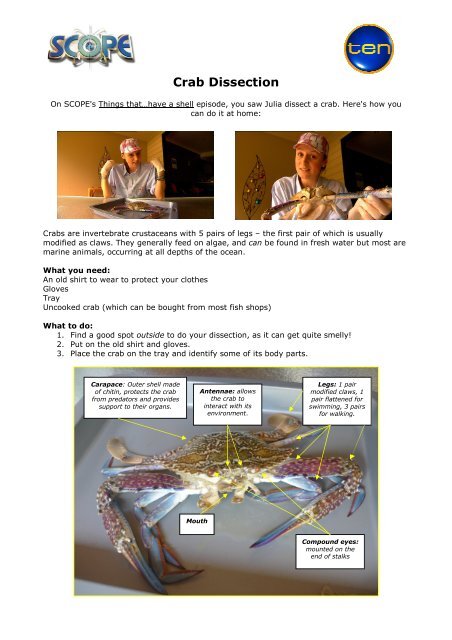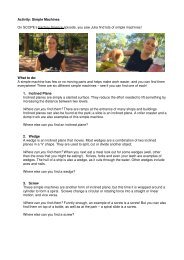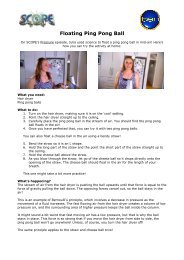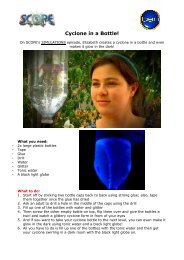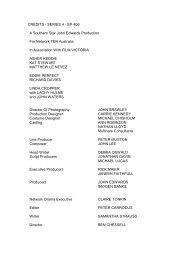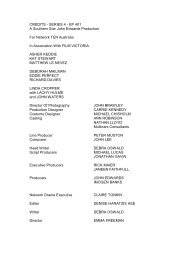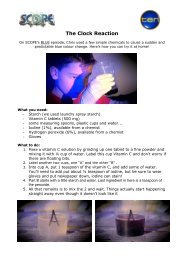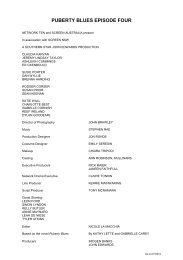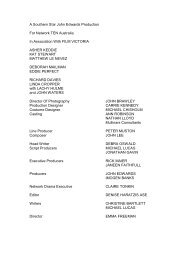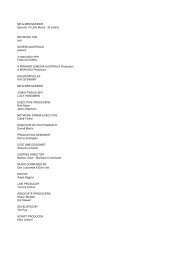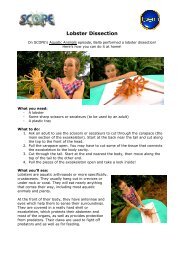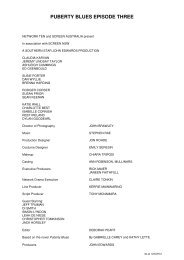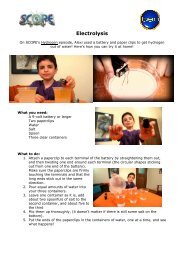Crab Dissection
Crab Dissection
Crab Dissection
Create successful ePaper yourself
Turn your PDF publications into a flip-book with our unique Google optimized e-Paper software.
<strong>Crab</strong> <strong>Dissection</strong><br />
On SCOPE's Things that…have a shell episode, you saw Julia dissect a crab. Here's how you<br />
can do it at home:<br />
<strong>Crab</strong>s are invertebrate crustaceans with 5 pairs of legs – the first pair of which is usually<br />
modified as claws. They generally feed on algae, and can be found in fresh water but most are<br />
marine animals, occurring at all depths of the ocean.<br />
What you need:<br />
An old shirt to wear to protect your clothes<br />
Gloves<br />
Tray<br />
Uncooked crab (which can be bought from most fish shops)<br />
What to do:<br />
1. Find a good spot outside to do your dissection, as it can get quite smelly!<br />
2. Put on the old shirt and gloves.<br />
3. Place the crab on the tray and identify some of its body parts.<br />
Carapace: Outer shell made<br />
of chitin, protects the crab<br />
from predators and provides<br />
support to their organs.<br />
Mouth<br />
Antennae: allows<br />
the crab to<br />
interact with its<br />
environment.<br />
Legs: 1 pair<br />
modified claws, 1<br />
pair flattened for<br />
swimming, 3 pairs<br />
for walking.<br />
Compound eyes:<br />
mounted on the<br />
end of stalks
4. Gently open the crab by lifting up the shell from the back. Make sure you do it slowly<br />
and carefully, so you don't disrupt the organs inside. You will notice that the smell gets<br />
a lot worse, but try to forget about that because there are some cool things to see<br />
inside!<br />
5. Identify some of its internal features.<br />
Gill rakers:<br />
sweep the<br />
gills clean.<br />
Gills: absorb<br />
oxygen from<br />
the water<br />
Stomach:<br />
digests food<br />
Heart:<br />
pumps<br />
blood<br />
around the<br />
body<br />
Flank: muscles, a part of<br />
the crab that people eat!<br />
6. When you're finished investigating the crab, place it in a plastic bag, then into the bin<br />
and of course, wash out the tray.


